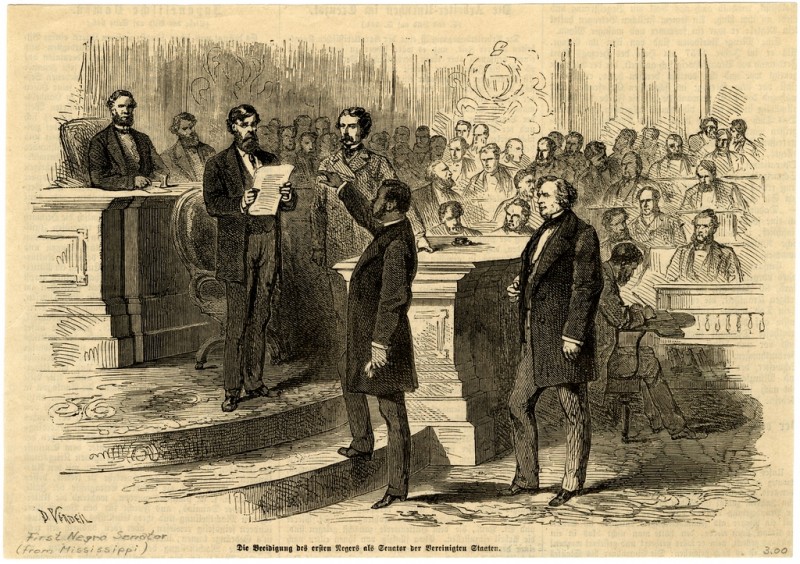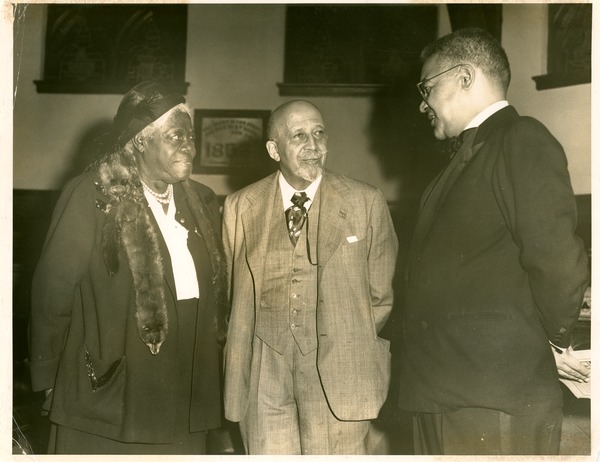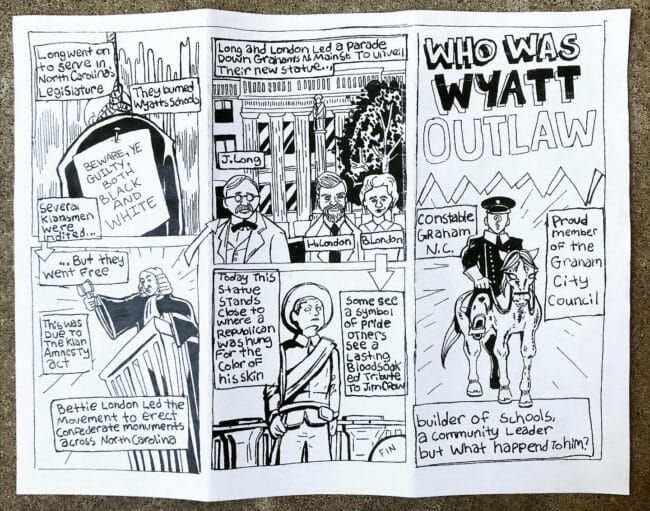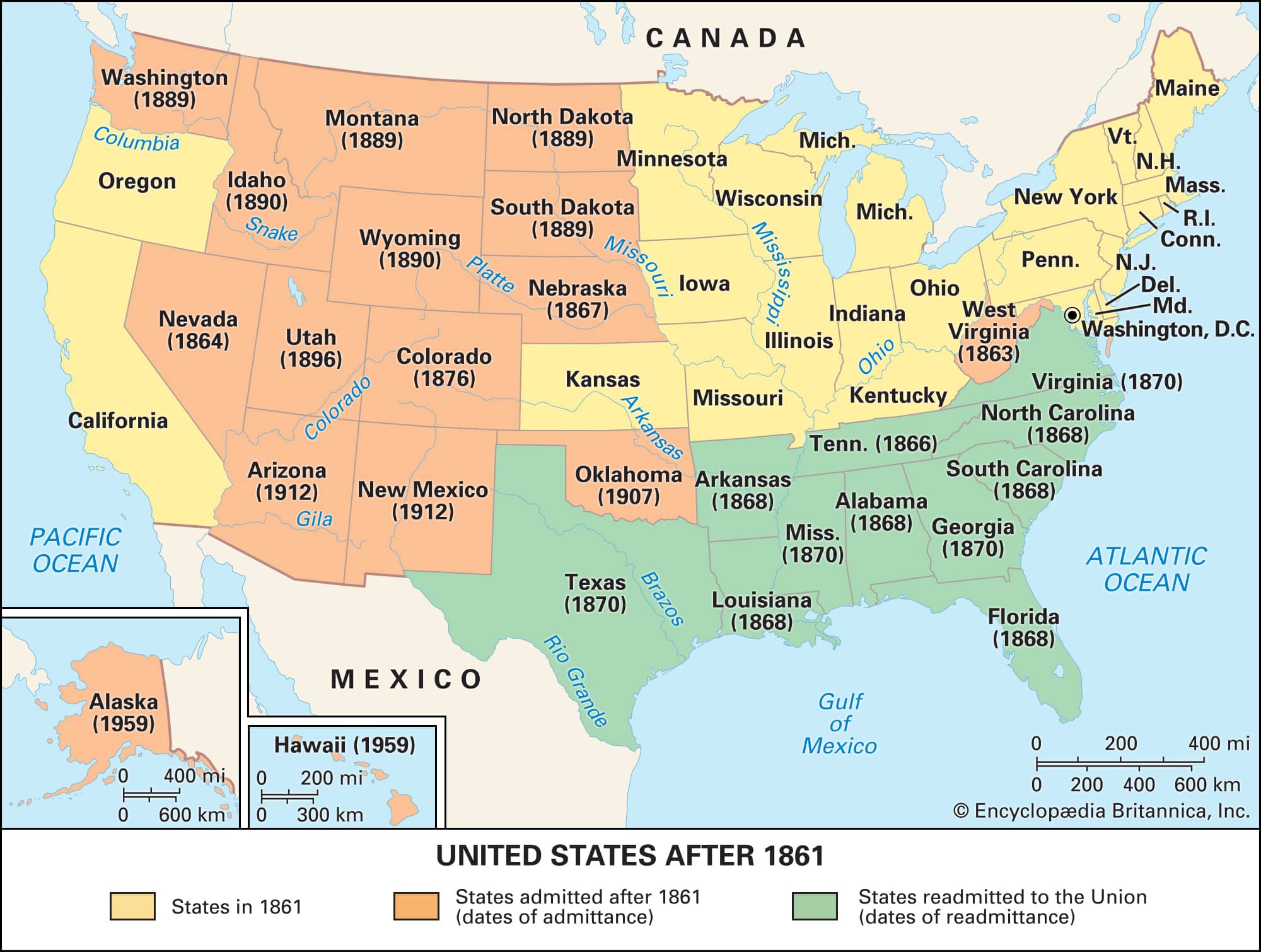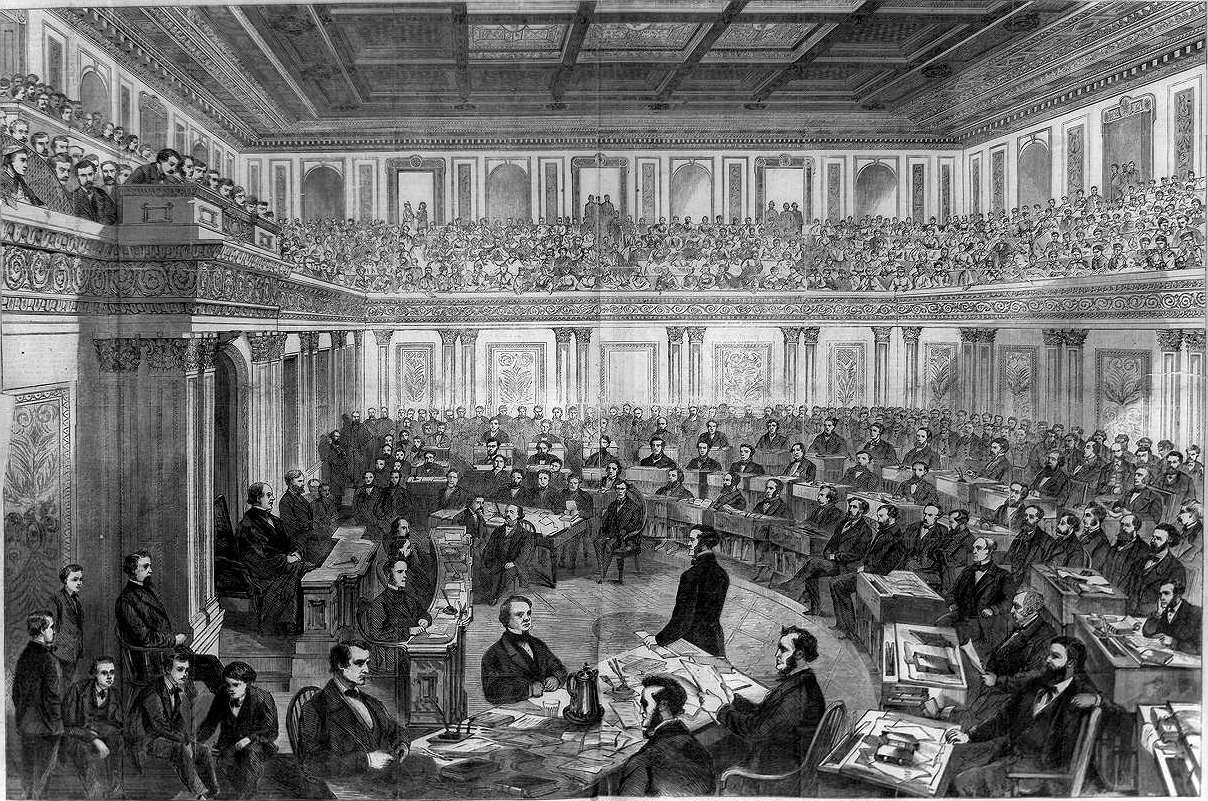Picture book. By Shana Keller and illustrated by Laura Freeman. 2024. 40 pages.
Helps introduce young readers to the history of African American family members desperately trying to find their children, spouses, siblings, parents, and other loved ones during Reconstruction.
Continue reading
Picture book. By Lesa Cline-Ransome, illustrated by James E. Ransome. 2024. 40 pages.
Shows how one enslaved man, secretly named Teach, helps others learn to read and write wherever he can.
Continue reading
Book — Non-fiction. By Eve L. Ewing. 2025. 400 pages.
An examination of how the U.S. school system helps maintain racial inequality and social hierarchies.
Continue reading
Hiram Revels was sworn into office as senator from Mississippi, becoming the first African American to serve in the U.S. Senate.
Continue reading
W. E. B. Du Bois, sociologist, historian, Pan-Africanist, author, and editor, was one of the most important scholars of the 20th century.
Continue reading
Wyatt Outlaw, a Union veteran who became the first Black town commissioner of Graham, North Carolina, was seized from his home and lynched by members of the Ku Klux Klan known as the White Brotherhood, which controlled the county.
Continue reading
Congress overrode President Andrew Johnson’s veto and passed the first of four statutes known as the Reconstruction Acts, which outlined the process of readmission to the Union.
Continue reading
Book — Non-fiction. By Kate Masur and illustrated by Elizabeth Clarke. 2024. 192 pages.
This graphic history reveals the hopes and betrayals of Reconstruction, a critical period in American history.
Continue reading
This Reconstructon era anti-obscenity law made it a federal crime to disseminate birth control across state lines or through the mail.
Continue reading
The impeachment trial of President Andrew Johnson began in the Senate.
Continue reading
Following a suffrage bill that recognized women’s right to vote and hold public office in Wyoming, Black women there became the first to vote in a U.S. territory in 1870.
Continue reading
Book — Non-fiction. By Judith Giesberg. 2025. 336 pages.
The story of formerly enslaved people who spent years searching for family members stolen away during slavery.
Continue reading




